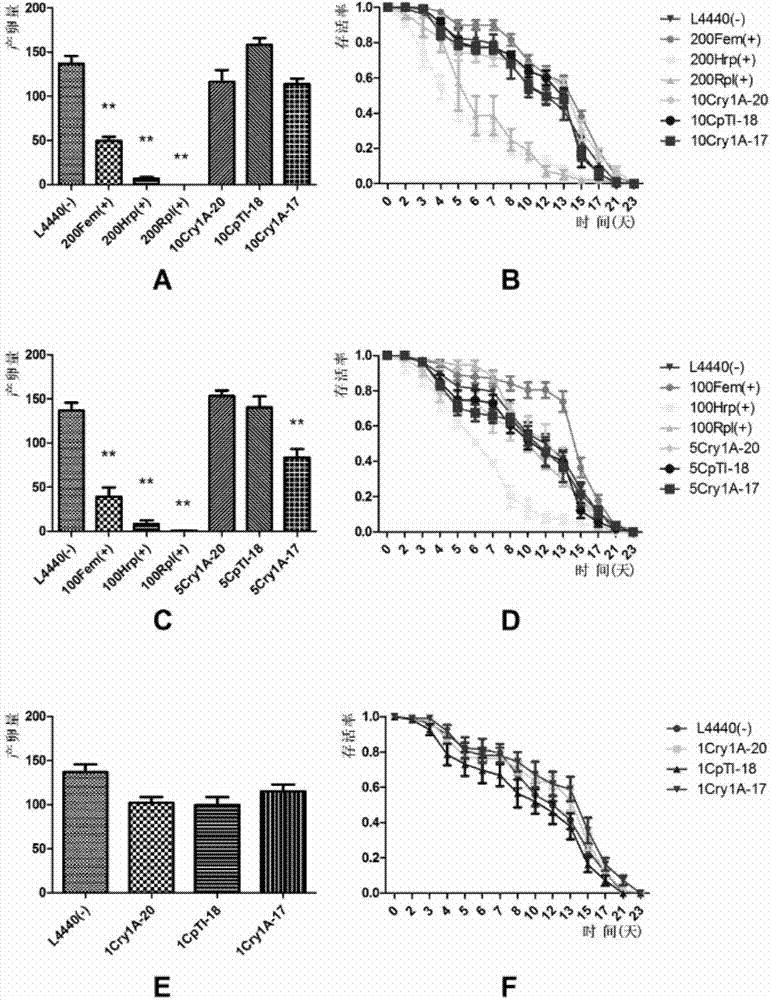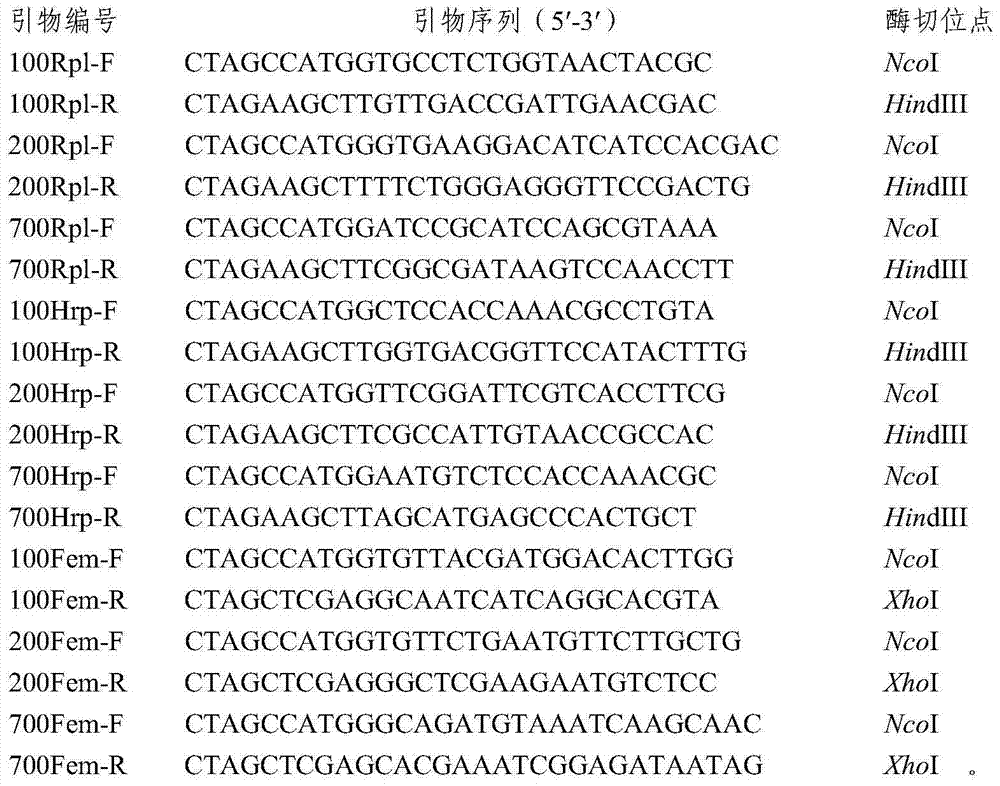Method for detecting safety of exogenous genes in transgenic crops on soil nematodes
A technology of exogenous genes and soil nematodes, applied in the field of molecular biology, to achieve the effect of easy breeding of nematodes and simple methods
- Summary
- Abstract
- Description
- Claims
- Application Information
AI Technical Summary
Problems solved by technology
Method used
Image
Examples
Embodiment 1
[0053] Example 1 Effect of exogenous genes cry1A and cpti in bivalent transgenic cotton on Caenorhabditis elegans
[0054] 1. Bioinformatics analysis of sequences
[0055] According to the patent information of bivalent transgenic cotton (Guo Sandui et al., 1999), the sequence information of the transferred exogenous genes cry1A and cpti was obtained.
[0056] Compare and analyze the acquired exogenous gene cry1A and cpti sequences with the whole genome sequence of Caenorhabditis elegans using the BLAT program (http: / / genome.ucsc.edu / index.html) to find out the complete match and Target gene fragments with a length of 17 bp or more.
[0057] These short fragments were searched and analyzed in Wormbase (http: / / www.wormbase.org / ) to find out the sequence of the target gene fragments that can reversely complement the exons in the Caenorhabditis elegans genome. The results of bioinformatics analysis of the sequences are shown in Table 1.
[0058] Table 1 Comparison results of e...
PUM
 Login to View More
Login to View More Abstract
Description
Claims
Application Information
 Login to View More
Login to View More - R&D
- Intellectual Property
- Life Sciences
- Materials
- Tech Scout
- Unparalleled Data Quality
- Higher Quality Content
- 60% Fewer Hallucinations
Browse by: Latest US Patents, China's latest patents, Technical Efficacy Thesaurus, Application Domain, Technology Topic, Popular Technical Reports.
© 2025 PatSnap. All rights reserved.Legal|Privacy policy|Modern Slavery Act Transparency Statement|Sitemap|About US| Contact US: help@patsnap.com



